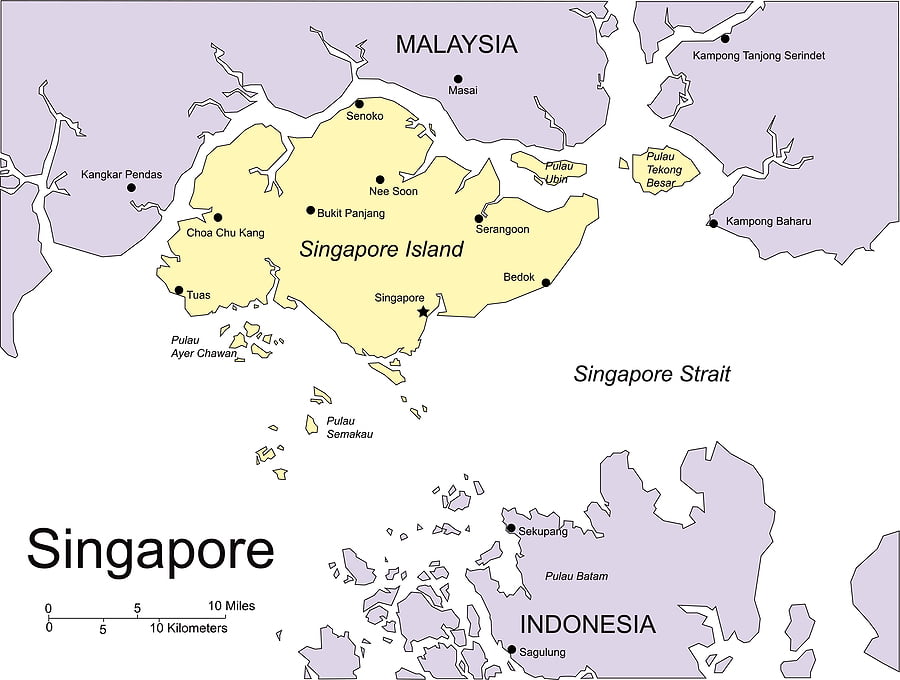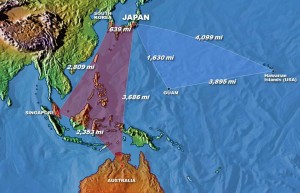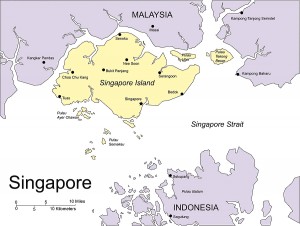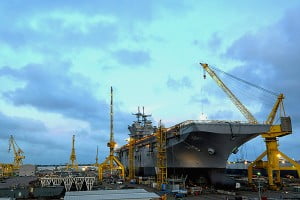2012-11-07 By Richard Weitz
The U.S-ROK military alliance has been the foundation of both countries’ strategic policies for over fifty years.
The United States and South Korea signed a Mutual Defense Treaty in October 1953 following the 1950-53 Korean War, in which 33,600 American troops were killed and more than 100,000 seriously injured in the successful effort to reverse the surprise North Korean invasion. The Treaty, which took effect in November of the following year, commits the United States to help the Republic of Korea counter an external armed attack and authorizes the deployment of American military forces on ROK territory.
To enhance the U.S. capability to defend South Korea, 37,500 U.S. combat forces, consisting of approximately 28,300 U.S. Army ground troops, 8,700 USAF personnel, and 500 Marines, were until a few years ago deployed in the ROK. Many of them were based near the demilitarized zone established in 1953 to separate North and South Korean military forces.
The U.S.-ROK Combined Forces Command (CFC) established during the Cold War assigns to the Commander of U.S. Forces Korea (USFK) operational control of most South Korean units during wartime. Although U.S. and ROK leaders described such a command arrangement as a mechanism to strengthen military efficiency, some Americans also saw it as a way of curbing potentially unwelcome South Korean military actions against the North.
In any case, the United States did not transfer operational control of ROK units in peacetime to South Korea’s Joint Chiefs of Staff (JCS) until December 1994.
A separate United Nations Command (UNC), whose primary responsibility is to uphold the terms of the Korean War Armistice Agreement, integrates non-U.S. foreign forces into ROK defenses. The United States has also deployed substantial military forces in Japan; one of their primary missions is defending South Korea.
The large U.S. military presence in South Korea has invariably generated friction with the host nation, including protests against the misdeeds of American soldiers based in South Korea. Efforts to manage such concerns have resulted in several revisions in the U.S.-ROK Status of Forces Agreement (SOFA), which defines the legal status and obligations of the U.S. troops stationed in South Korea.
Changing the US Presence
The current SOFA grants South Korean authorities primary jurisdiction over American military personnel accused of only a limited number of offenses when they are off duty. During the first few decades of the alliance, the very real threat of another North Korean attack and the repressive policies of successive authoritarian ROK governments dampened widespread displays of anti-Americanism, but the end of the Cold War and South Korea’s transformation into a liberal democracy in the late 1980s made it easier for manifestations of anti-Americanism to appear.
In turn, the Pentagon’s the number of U.S troops permanently stationed in South Korea and to changed the location of these forces.
The reasons for this are several.
First, there was a need to send U.S. forces from South Korea to Iraq and Afghanistan,
Second, there are changing global security threats,
Third, there are improving military technologies,
Fourth, there was a need to address discontent among South Koreans.
After analyzing and discussing the issue for several years, U.S. officials decided in late 2002 to relocate most USFK forces from their prominent locations in Seoul and along the DMZ and consolidate them in two locations further south in less prime real estate.
A major component of the realignment was the transfer of the main U.S. military base in South Korea out of central Seoul to the Osan-Pyongtaek region, situated 70 kilometers south of the ROK capital. This sprawling Yongsan Garrison—which houses the headquarters of the UNC, CFC, and USFK—had been a constant source of tension given its prominent location in downtown Seoul.
The Pentagon also withdrew U.S. soldiers belonging to the U.S. Second Infantry Division from positions located near the DMZ to the Osan-Pyongtaek region.
At the same time, the USFK have been transferring important combat missions over to the ROK forces, whose capabilities have been continually improving in recent years.
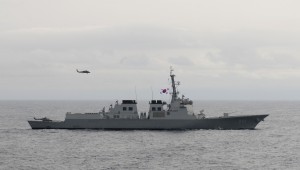
American officials have argued that the need for U.S. troops to serve as a “tripwire” located along the intra-Korean border to guarantee that the United States would intervene militarily to halt any North Korean invasion has become outdated. Instead, enhancements in U.S. transportation, logistics, and long-range precision-strike capabilities could enable U.S. forces to rapidly reinforce the Peninsula.
The changing nature of the U.S. military deployments in South Korea spurred interest in restructuring other elements of the ROK-U.S. alliance.
At the 34th Security Consultative Meeting held in Washington in December 2002, the two defense ministers signed terms of reference for the Future of the ROK-U.S. Alliance (FOTA) Policy Initiative. Formal talks began in 2003 and continued through nine rounds of discussions. The parties’ original intent was to undertake a comprehensive study of how to strengthen their bilateral alliance over the next decade.
Because the discussions over the repositioning and withdrawal of American forces from the peninsula proved so complex and decisive, however, ROK and U.S. negotiators made limited progress in addressing longer-term issues such as revising military command arrangements and responding to transnational threats and extra-peninsular contingencies. These talks were later replaced by the Security Policy Initiative (SPI) and plans were drawn up for U.S. forces in Korea to be re-aligned.
Preparing for an OPCON Transition
Under a 2006 agreement called, the “Roadmap for the New Alliance Military Structure in the post-OPCON Transition Era’,” the countries agreed to transfer Operation Command (OPCON) of the South Korean forces even in wartime to the ROK sometime between October 15, 2009 and March 15, 2012.
In June 2010, the parties, citing the evident in the recent DPRK provocations, decided to defer wartime OPCON transition until the end of 2015.
The postponement may also have been designed to assuage the worries of many analysts that the 2012 date would have been premature.
In addition to transferring wartime command of South Korean forces to ROK command, changing global security threats and requirements, the improving conventional weaponry of both militaries, and other factors have led to the mutual decision to reduce the number of U.S. troops permanently stationed in South Korea.
The changes have proven somewhat controversial among South Koreans who fear that the transfer could embolden their already erratically provocative neighbor.
In particular, South Koreans worry that these moves could cause the DPRK leadership to misperceive a decline in the U.S. willingness to defend them against a North Korean attack. Although the Americans see the move as upgrading the ROK’s status and underscoring U.S. confidence in the ROK’s improving military capabilities, many South Koreans interpret the realignment as reflecting American eagerness to reduce its ROK-related commitments to reallocate U.S. defense resources to higher security priorities.
In justifying the relocations and the closings of dozens of U.S. military bases in the ROK, U.S. officials argues that the need for U.S. troops to serve as a “tripwire” located along the intra-Korean border to guarantee American military intervention against any North Korean invasion has become outdated.
Instead, U.S. forces would rely on superior mobility and air and naval power projection to crush a DPRK attack.
U.S. troops also could more easily participate in non-Korean contingencies from their new location. In addition, the Bush administration argued that troop realignment reflected a desire to reduce the burden on local communities; making the military relationship will become more sustainable over the long-term.
Re-aligning the US-ROK Alliance
The changes in the U.S. military footprint in South Korea also represented one element of a larger process of realigning the U.S. military presence to accord better with the imperatives of the post-9/11 world.
The Pentagon wanted to reduce the number of U.S. troops in enormous permanent bases in Western Europe and Northeast Asia while relying more on short-term deployments to forward operating bases in potential or actual conflict regions. Enhancements in U.S. transportation logistics and global strike capabilities would enable U.S. forces to exploit their increased flexibility and counter adversaries’ improving anti-access strategies.
ROK objections, as well as gratitude for the South’s substantial troop contribution in Iraq and concerns about weakening the U.S.-ROK’s bargaining position vis-à-vis North Korea, induced the United States to delay the planned troop withdrawals.
After four months of contentious negotiations, the two sides agreed to spread out the planned redeployment of the 12,500 U.S. troops into three phases. In 2004, about 5,000 American troops, including the soldiers of the 2nd Brigade Combat Team, would leave South Korea. During the second phase of 2005-2006, the United States expected to withdraw another 5,000 troops (3,000 in 2005; 2,000 in 2006). During the final phase of 2007-2008, another 2,500 troops would depart. These withdrawals ended in 2008. At present, USFK has some 28,500 active-duty personnel (19,000 Army) as well as many dependents and contractors.
In addition, U.S. officials agreed to keep certain military assets in South Korea following specific ROK requests, including the Multiple Rocket Launching System stationed along the DMZ, the AN/TPQ radar that detects the movement of DPRK long-range artillery, and two squadrons of upgraded Apache helicopters.
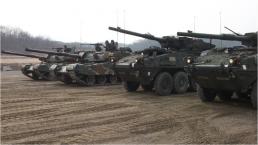
Furthermore, the Pentagon in 2003 launched an $11 billion multi-year effort to improve the U.S. military systems deployed in and near South Korea. The modernization program included more than 100 separate enhancements of the U.S. military capabilities in the region.
At their 43rd annual U.S.- ROK Security Consultative meeting, the two sides established the Korea-U.S. Integrated Defense Dialogue (KIDD), to coordinate and integrate various bilateral defense consultation mechanisms by providing them with high-level political oversight.
At their comments at their October 2012 44th annual U.S.- ROK Security Consultative meeting, the two defense ministers agreed to keep the number of U.S. troops deployed in South Korea unchanged, enhance their capabilities and readiness, and ensure the timely provision of reinforcements.
They expressed concern about the situation in North Korea following the 2010 provocations, the April 2012 missile launch, and the ongoing political leadership transition in Pyongyang. They pledged to resist further provocations by augmenting their readiness through combined exercises and training, increase combined surveillance activities near the Northwest Islands and the Northern Limit Line (NLL), and developing a U.S.-ROK Counter-Provocation Plan based on shared concepts and principles.
The two defense ministers affirmed that the relocation of USFK units and the transition of wartime OPCON in December 2015 were proceeding according to the Strategic Alliance 2015 implementation plan, which they pledged to review and assess on a regular basis.
For example, they agreed to hold the previously annual Military Consultative Meeting (MCM)—headed by the Chairman of the Joint Chiefs of Staff of both countries–biannually from now through 2015.
Secretary Panetta reaffirmed the U.S. commitment to defend South Korea “using both capabilities postured on the Korean Peninsula and globally available U.S. forces” as well as “to provide specific bridging capabilities until the ROK obtains full self-defense capabilities, and further noted the U.S. commitment to contribute enduring capabilities for the life of the Alliance.” Minister Kim restated the ROK was “committed to developing or acquiring the critical military capabilities necessary to assume the lead of the combined defense.” USKF head General Thurman had the day before cited ROK investments in UAVs, BMD, and interoperable command and control systems as core elements of its modernization program.
Furthermore, the parties agreed to create a working group to develop plans for a new joint command structure within the structure of the ROK Joint Chiefs of Staff to ensure military efficiency after a “strong and seamless” transition.
Defense Minister Kim Kwan-jin was at pains to stress that, while the two governments saw “great strength” in the CFC and was hoping to leverage what they had learned from it, “we are trying to build a system following the dissolution of the Combined Forces Command. We are not trying to build another Combined Forces Command.”
He noted that after 2015 the ROK forces would have OPCON and the USFK would be supporting them. Still, analysts speculated that the move aimed to reassure those South Koreans worried that the CFC’s dissolution would weaken the alliance’s defense and deterrence capabilities by emboldening the DPRK leadership and weakening the U.S. commitment to the ROK’s defense.
For discussions of several of the issues discussed here by the current 7th USAF commander and two former commanders see the following:
https://www.sldinfo.com/meeting-the-korean-defense-challenge-the-view-from-7th-air-force/
https://www.sldinfo.com/south-korean-defense-re-considered-preparing-for-2015/
https://www.sldinfo.com/understanding-the-challenge-of-deterring-north-korea/
For a look at the potential role of the F-35 in evolving US and South Korean defense strategy see the following:
https://www.sldinfo.com/f-35as-to-korea-shaping-a-defense-transition-to-deal-with-real-threats/
https://www.sldinfo.com/the-transformed-korea-us-alliance-needs-f-35s/


